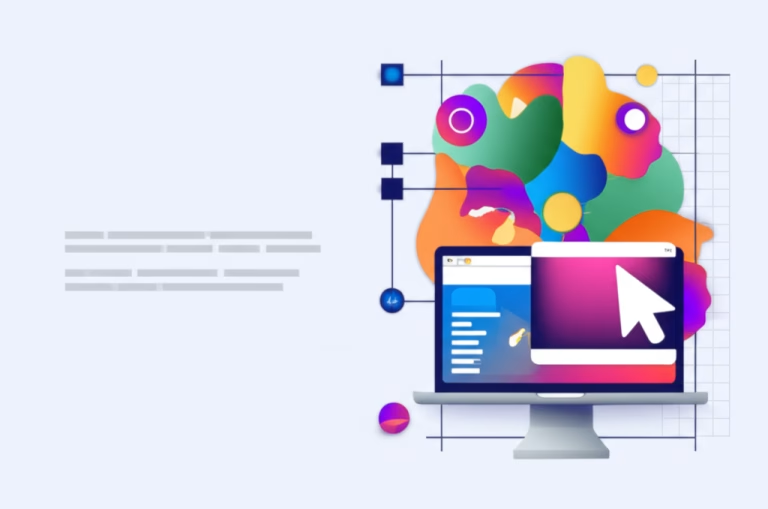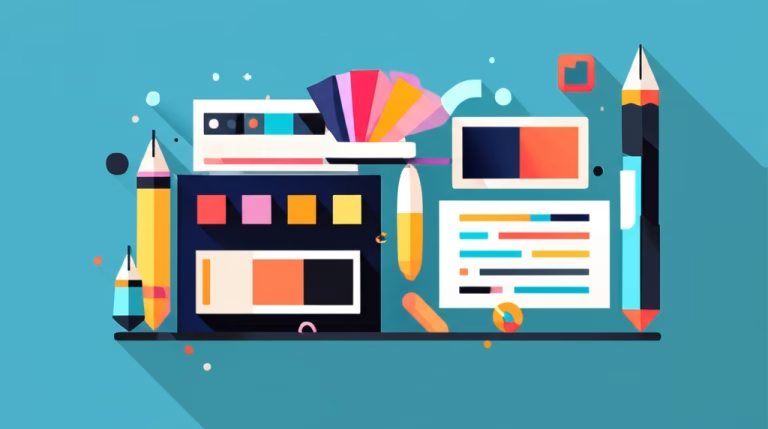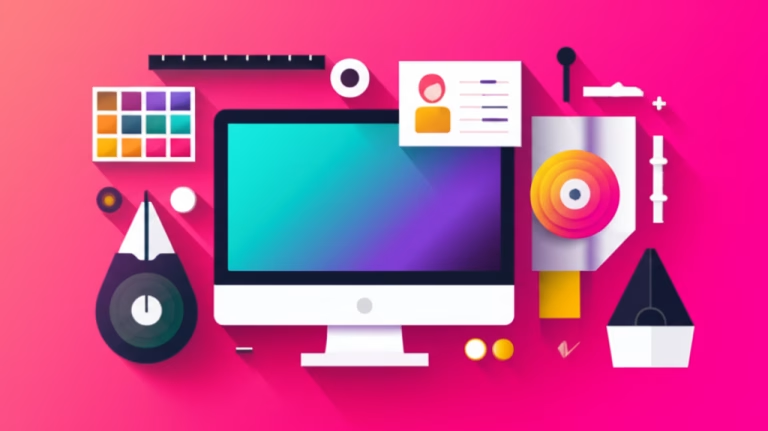Creative Ideas: A Beginner’s Guide to Unleashing Your Inner Artist
Ever feel stuck in a creative rut? Like all the good ideas are already taken? Don’t worry, you’re not alone! Many aspiring designers struggle to tap into their creative potential. This post is your friendly guide to understanding and nurturing your creative ideas. We’ll explore what creativity really means, why it’s essential in design, and how to unlock your own unique creative flow. Get ready to spark some inspiration!
What are Creative Ideas?
Creative ideas are novel and valuable concepts that solve problems, express emotions, or simply bring something new into the world. They go beyond the ordinary and offer a fresh perspective. Think of it as connecting dots in unexpected ways, or seeing possibilities where others see limitations. A creative idea isn’t just about being different; it’s about being different and useful, or different and beautiful, or different and meaningful. It’s a blend of originality and purpose.
In essence, creative ideas are the building blocks of innovation and progress. They are the driving force behind groundbreaking designs, impactful art, and ingenious solutions. They can be big or small, complex or simple, but they always have the power to make a difference. The most important thing to remember is that everyone has the potential to generate creative ideas; it’s just a matter of learning how to tap into your inner wellspring of inspiration.
Why are Creative Ideas Important in Design?
In the world of design, creative ideas are absolutely crucial. They’re what sets your work apart, helps you solve problems effectively, and allows you to connect with your audience on a deeper level. Imagine a world without creative ideas in design – everything would look the same, function the same, and feel the same. It would be a pretty dull place!
Here’s why creative ideas are so vital:
- Problem-Solving: Design is all about solving problems, and creative ideas are the key to finding innovative solutions. They allow you to think outside the box and come up with approaches that others might miss.
- Differentiation: In a crowded marketplace, creative ideas help your designs stand out from the competition. They give you a unique selling proposition and make your work more memorable.
- Engagement: Creative ideas capture attention and spark interest. They make your designs more engaging and encourage people to interact with them.
- Impact: Creative ideas can have a profound impact on the world. They can inspire change, improve lives, and make a positive contribution to society.
- Personal Growth: The process of generating creative ideas is also beneficial for your own personal growth. It helps you develop your critical thinking skills, expand your horizons, and become a more well-rounded individual.
Ultimately, creative ideas are what transform ordinary designs into extraordinary ones. They are the heart and soul of the design process, and they are essential for anyone who wants to make a real impact in the field.
Basic Principles / Rules / Tools
While creativity might seem like a mysterious and elusive quality, there are actually some basic principles, rules, and tools that can help you cultivate it. Think of these as your **creative** toolkit – resources you can draw upon whenever you’re feeling stuck or uninspired.
Principles:
- Embrace Curiosity: Cultivate a sense of wonder and be open to exploring new things. Ask questions, challenge assumptions, and never stop learning.
- Be Playful: Don’t be afraid to experiment and try new things. Creativity often arises from playful exploration and experimentation.
- Embrace Failure: Failure is a natural part of the creative process. Don’t let it discourage you; instead, learn from your mistakes and keep moving forward.
- Be Open-Minded: Be willing to consider different perspectives and ideas. Creativity often comes from combining seemingly unrelated concepts.
- Trust Your Intuition: Sometimes the best ideas come from your gut. Trust your instincts and don’t be afraid to take risks.
Rules (Guidelines, really):
- Set Constraints: Paradoxically, limitations can actually boost creativity. Give yourself specific parameters to work within, and see what you can come up with.
- Timeboxing: Dedicate specific blocks of time to creative work. This can help you focus and avoid distractions.
- The “Yes, And…” Rule: In brainstorming sessions, build upon each other’s ideas instead of shooting them down. This fosters a more collaborative and creative environment.
Tools:
- Brainstorming: A classic technique for generating a large number of ideas in a short amount of time.
- Mind Mapping: A visual tool for organizing thoughts and exploring connections between ideas.
- Sketching: A quick and easy way to visualize ideas and explore different possibilities.
- Mood Boards: Collections of images, colors, and textures that can inspire creative thinking.
- Prototyping: Creating rough versions of your ideas to test and refine them.
By understanding and applying these principles, rules, and tools, you can create a more fertile ground for creative ideas to flourish.
Common Mistakes (and How to Avoid Them)
Even with the best intentions, it’s easy to fall into common traps that can stifle your **creativity**. Recognizing these mistakes is the first step to avoiding them and unlocking your full **creative** potential.
Here are some common pitfalls and how to steer clear of them:
- Fear of Judgment: Worrying about what others will think can paralyze your creative process. How to Avoid: Remind yourself that creativity is subjective, and not everyone will love your ideas. Focus on your own vision and trust your instincts. Practice self-compassion and remind yourself that it’s okay to make mistakes.
- Perfectionism: Striving for perfection can lead to procrastination and prevent you from ever finishing anything. How to Avoid: Embrace the “good enough” mentality. Focus on progress, not perfection. Set realistic goals and celebrate small victories along the way.
- Lack of Inspiration: Feeling like you have no new ideas can be frustrating. How to Avoid: Actively seek out inspiration from a variety of sources. Explore different art forms, read books, watch movies, travel to new places, and talk to interesting people. The more you expose yourself to new experiences, the more fuel you’ll have for your creative fire.
- Overthinking: Analyzing your ideas too much can kill their spontaneity and originality. How to Avoid: Learn to quiet your inner critic and trust your intuition. Don’t be afraid to let your ideas flow freely without overanalyzing them. Try techniques like freewriting or automatic drawing to bypass your conscious mind.
- Sticking to the Familiar: Repeating the same ideas and approaches can lead to stagnation. How to Avoid: Challenge yourself to step outside your comfort zone and try new things. Experiment with different styles, techniques, and materials. Look for inspiration in unexpected places and be willing to take risks.
- Ignoring Feedback: While it’s important to trust your own vision, it’s also valuable to get feedback from others. How to Avoid: Seek out constructive criticism from people you trust and respect. Be open to hearing different perspectives and use feedback to improve your **ideas**. However, remember to filter the feedback and only incorporate what resonates with you.
By being aware of these common mistakes and actively working to avoid them, you can create a more supportive and nurturing environment for your **creativity** to thrive.
Step-by-Step: How to Apply Creative Ideas in Your Projects
Now that you understand the importance of creative ideas and how to cultivate them, let’s look at a step-by-step process for applying them to your design projects.
- Define the Problem: Clearly identify the problem you’re trying to solve or the goal you’re trying to achieve. The more specific you are, the easier it will be to generate relevant **ideas**.
- Gather Information: Research the problem thoroughly. Understand the context, the target audience, and any existing solutions. The more information you have, the better equipped you’ll be to come up with creative solutions.
- Brainstorming: Generate as many ideas as possible, without judgment. Use brainstorming techniques like mind mapping, free association, or reverse brainstorming. The goal is to come up with a wide range of possibilities, even if some of them seem far-fetched.
- Idea Selection: Evaluate your ideas and choose the ones that are most promising. Consider factors like feasibility, originality, and potential impact. Don’t be afraid to combine or modify ideas to create something even better.
- Develop and Refine: Flesh out your chosen ideas and develop them into concrete designs. Create sketches, prototypes, or mockups to visualize your concepts. Get feedback from others and iterate on your designs based on their input.
- Test and Evaluate: Test your designs with your target audience to see how they perform. Gather data and feedback to identify areas for improvement. Use the results of your testing to refine your designs and make them even more effective.
- Implement and Launch: Once you’re satisfied with your designs, implement them and launch them into the world. Monitor their performance and continue to make adjustments as needed. Remember that design is an iterative process, and there’s always room for improvement.
By following these steps, you can systematically apply creative ideas to your design projects and create innovative solutions that make a real difference.
FAQ Section
Q: What’s the best way to overcome a creative block?
A: Step away from the problem! Engage in a completely different activity that you enjoy, like taking a walk, listening to music, or spending time with loved ones. Sometimes, a change of scenery and a mental break are all you need to spark new ideas.
Q: How can I encourage creativity in a team setting?
A: Create a safe and supportive environment where everyone feels comfortable sharing their **ideas**, no matter how unconventional. Encourage collaboration, active listening, and constructive feedback. Use brainstorming techniques to generate a wide range of possibilities and celebrate both successes and failures as learning opportunities.
Q: Are there any specific tools or software that can help with creative thinking?
A: While there’s no magic bullet, mind mapping software like MindManager or XMind can help you organize your thoughts and explore connections between ideas. Visual collaboration tools like Miro or Mural can facilitate brainstorming and team creativity. Ultimately, the best tool is the one that works best for you and your team.
Conclusion
Congratulations! You’ve now taken your first steps towards understanding and unleashing your creative potential. We’ve explored what creative ideas are, why they’re important in design, and how to cultivate them in your own work. Remember, creativity is not a fixed trait; it’s a skill that can be developed and honed with practice. By embracing curiosity, experimenting with new approaches, and learning from your mistakes, you can unlock your inner artist and create designs that are both innovative and impactful.
The world needs your creative ideas! Don’t be afraid to share your unique vision and make a positive contribution to the world. Embrace the journey of creative exploration and never stop learning and growing. The possibilities are endless!
Ready to take your design skills to the next level? Check out our free checklist for beginner UX designers and start building amazing user experiences today!



